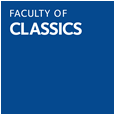This paper reassesses the designs on the surface of ‘ramo secco’ ingots and proposes that the insignia had a meaningful role in Etruscan culture. Whereas the design has previously been held to be a utilitarian part of the manufacturing process with no iconographic value or, conversely, a deliberate attempt to represent tridents, lightning, or some type of plant without a clear rationale, this paper offers the alternative suggestion that the design was intended to represent growing wheat. This proposal links the ingots to the agrarian and mineral wealth of the Etruscans and may help to reconstruct the ingots’ role in the Etruscan economy.



